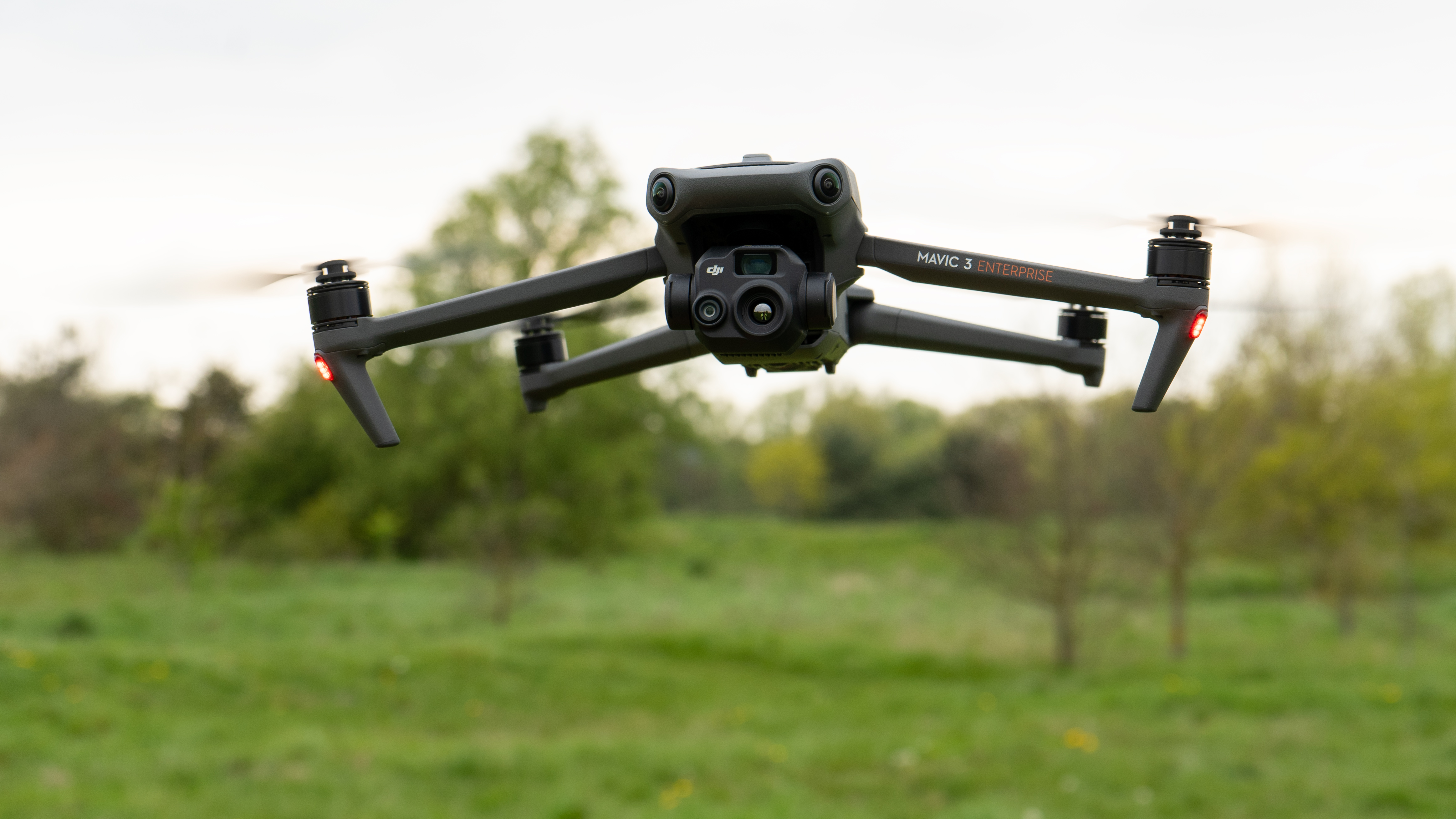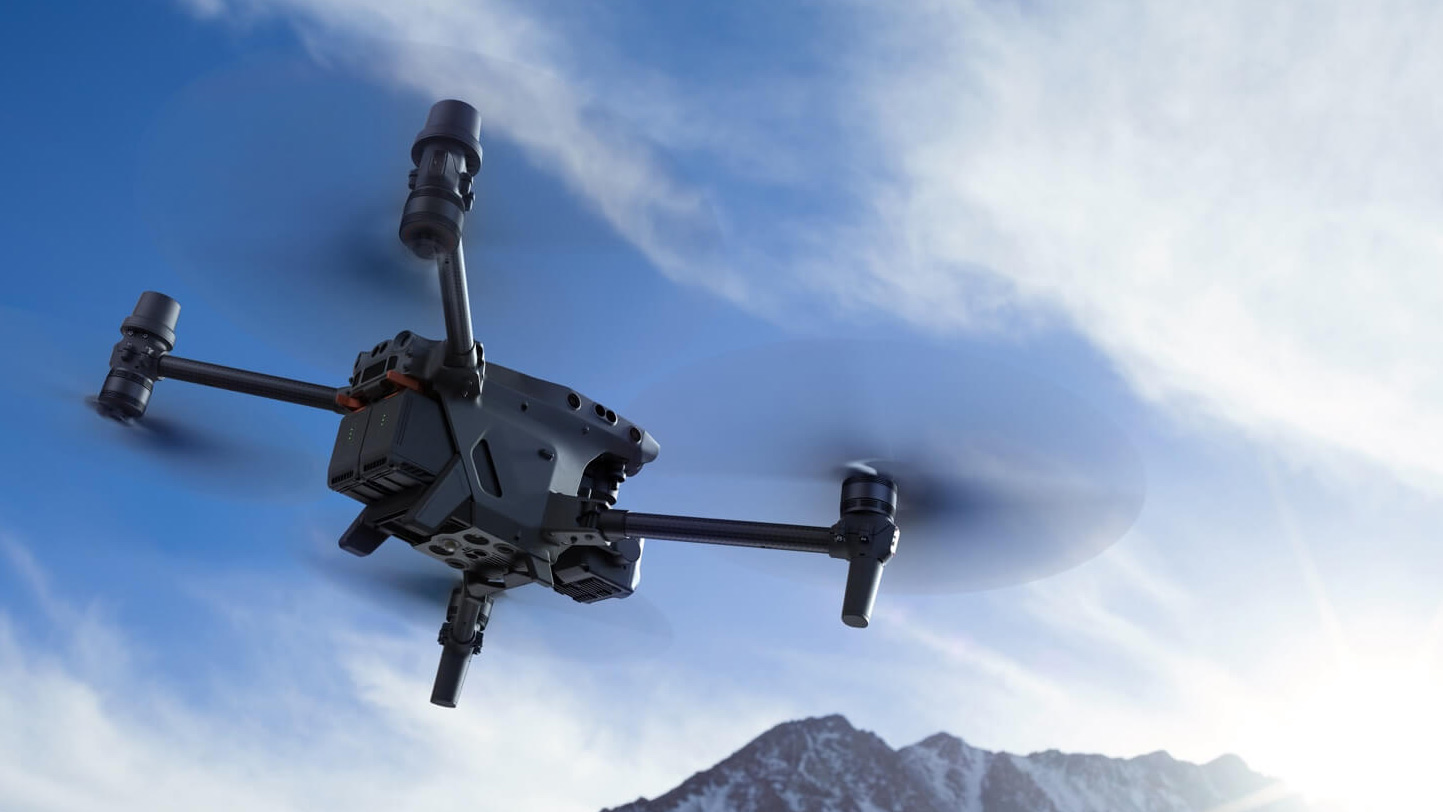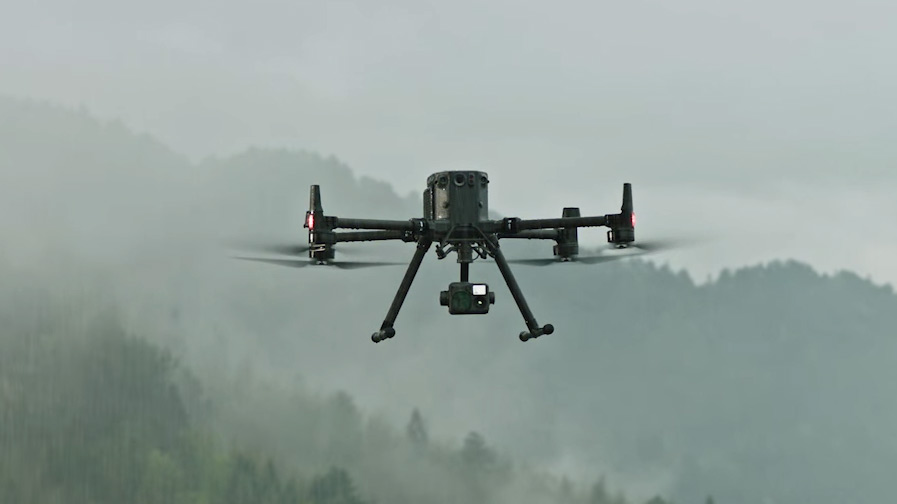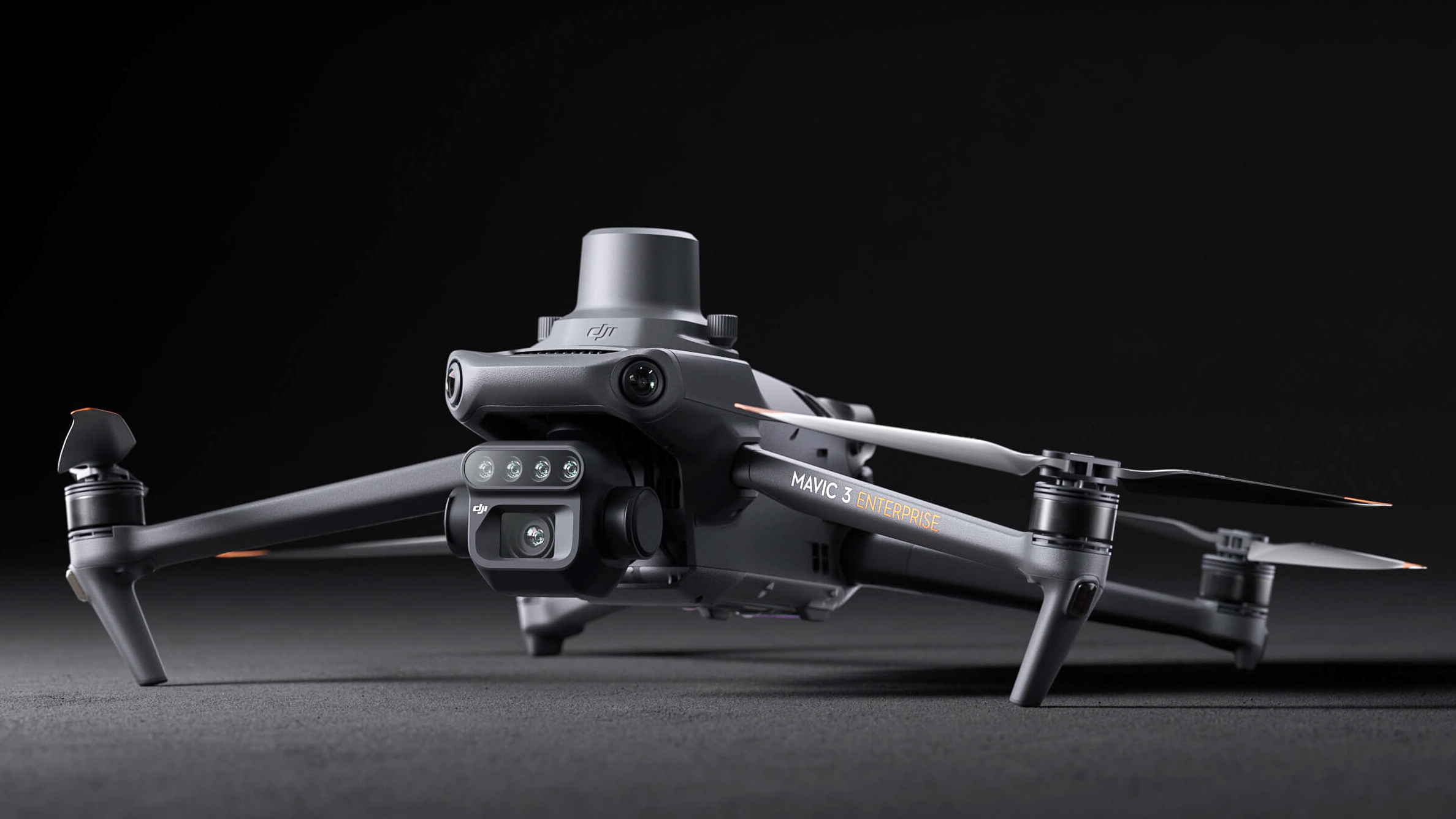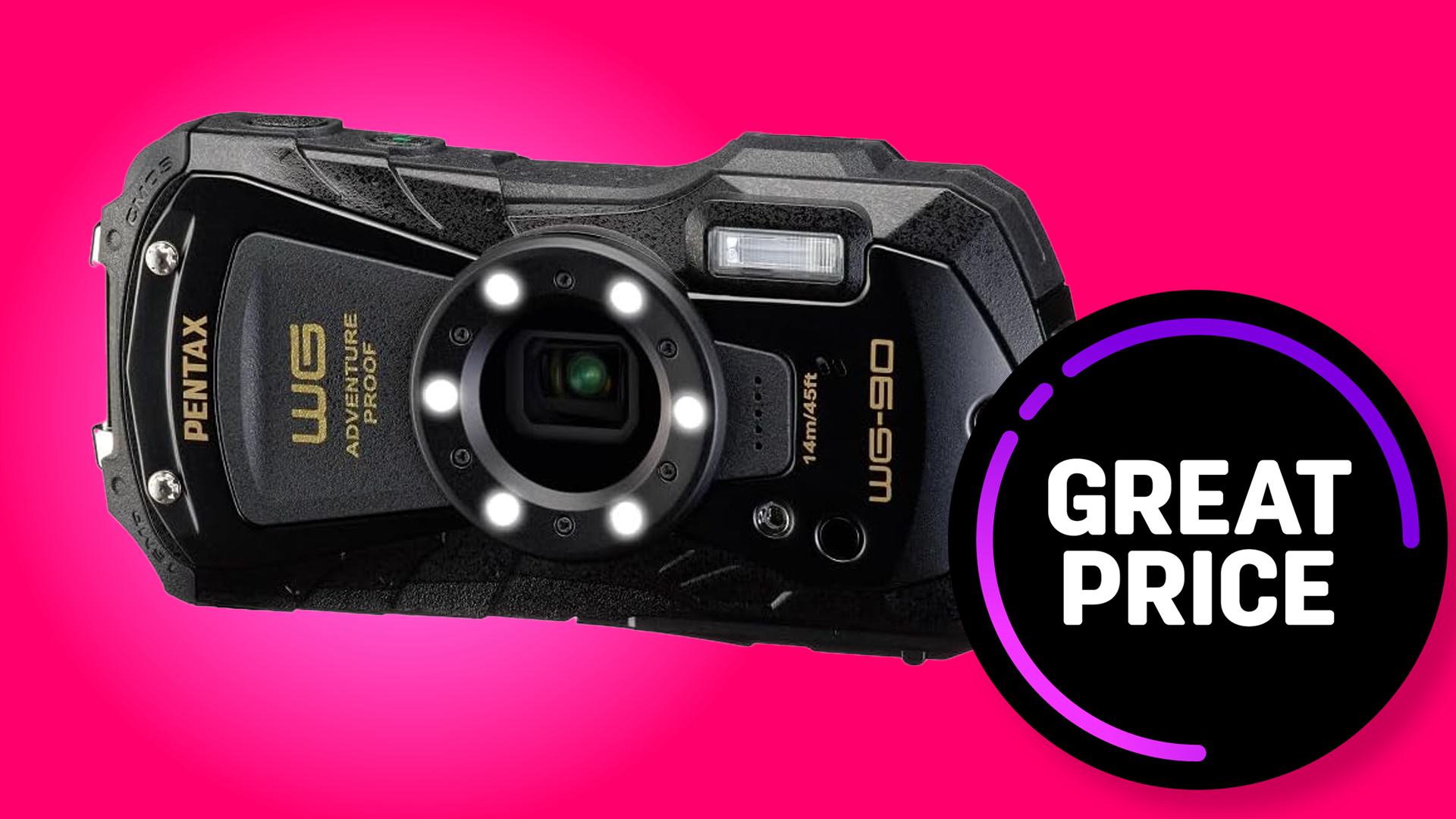The best thermal drones in 2025
Pinpoint heat signatures from the sky using one of the best thermal drones
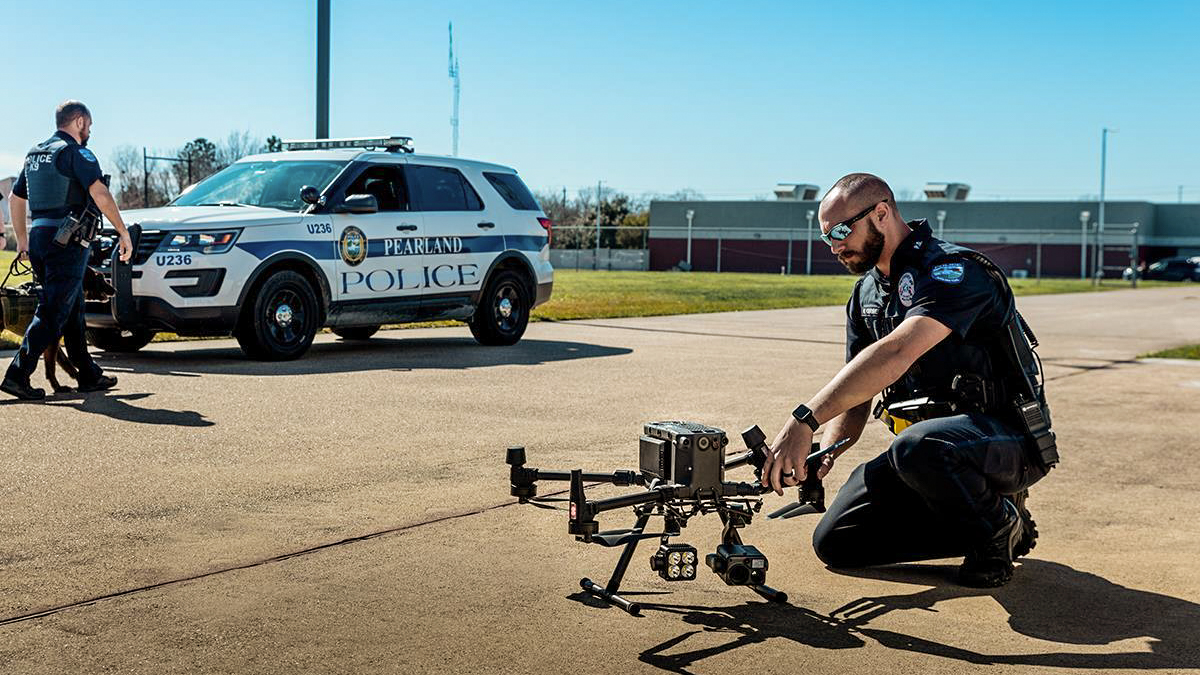
Thermal imaging technology has gone from being the preserve of the military and covert services to just another day-to-day tool. The Predator-like ability to see heat is as useful for building inspectors and insulation engineers as it is for search-and-rescue services. There is even a growing interest among game hunters (and those searching Loch Ness).
While an infrared camera can see at night, that doesn’t necessarily mean you’re allowed to fly in the dark – you will need to check your local regulations. (It is often required to take an additional course and get a certificate in order to be able to operate between sunset and sunrise.) Every drone on this list has a take-off-weight over 250g, so registration is also required in most places.
Finally don’t forget that thermal photography is only part of the equation for most purposes; it’s worth thinking about the visual camera and its capabilities. For operations like search-and-rescue a good zoom range is very useful. Longer optical (as opposed to digital) zoom or telephoto length is always better, too, though perhaps more significant if you’re looking to read a license plate, for example.
I could also talk here at length about resolution and frame rate, but it seems that the current crop of drones has somewhat standardized. Similarly, all these cameras offer ‘radiometric’ readings (remote temperature readings) so that’s not a capability question you need to log in advance.
UPDATE: Readers in the USA, take note. A lot of trade freedoms are being restricted – see the FAQs for more on how this affects drone choices and will do so even more from January 2026.
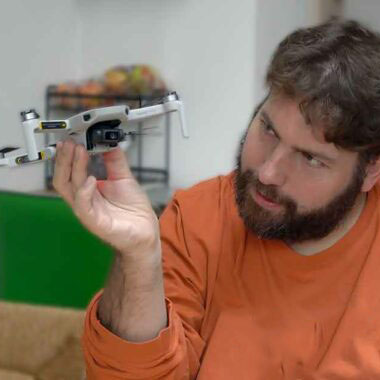
Adam has been looking at cameras and gadgets since long before drones arrived, so he dived into the flying tech with enthusiasm, building several of his own before off-the-shelf possibilities emerged. He is not just our resident expert on all aspects of camera drones and drone photography, but the author of several books on the subject including bestsellers The Complete Guide to Drones and The Drone Pilot's Handbook.
Top picks
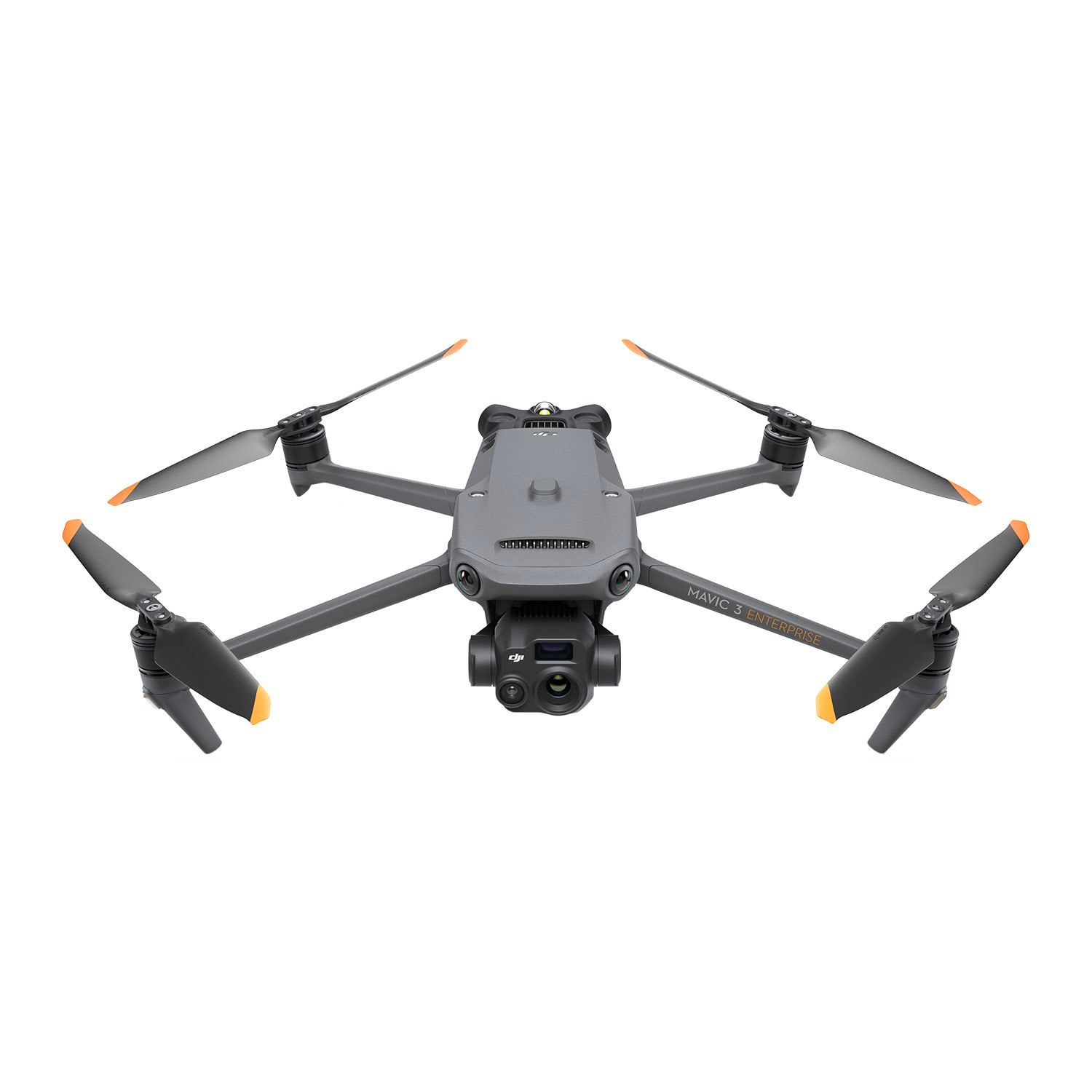
A great all-rounder based on the near-flawless Mavic 3 airframe with DJI's excellent software, a good flight time, a decent 4K optical camera, and handy dual live view mode.
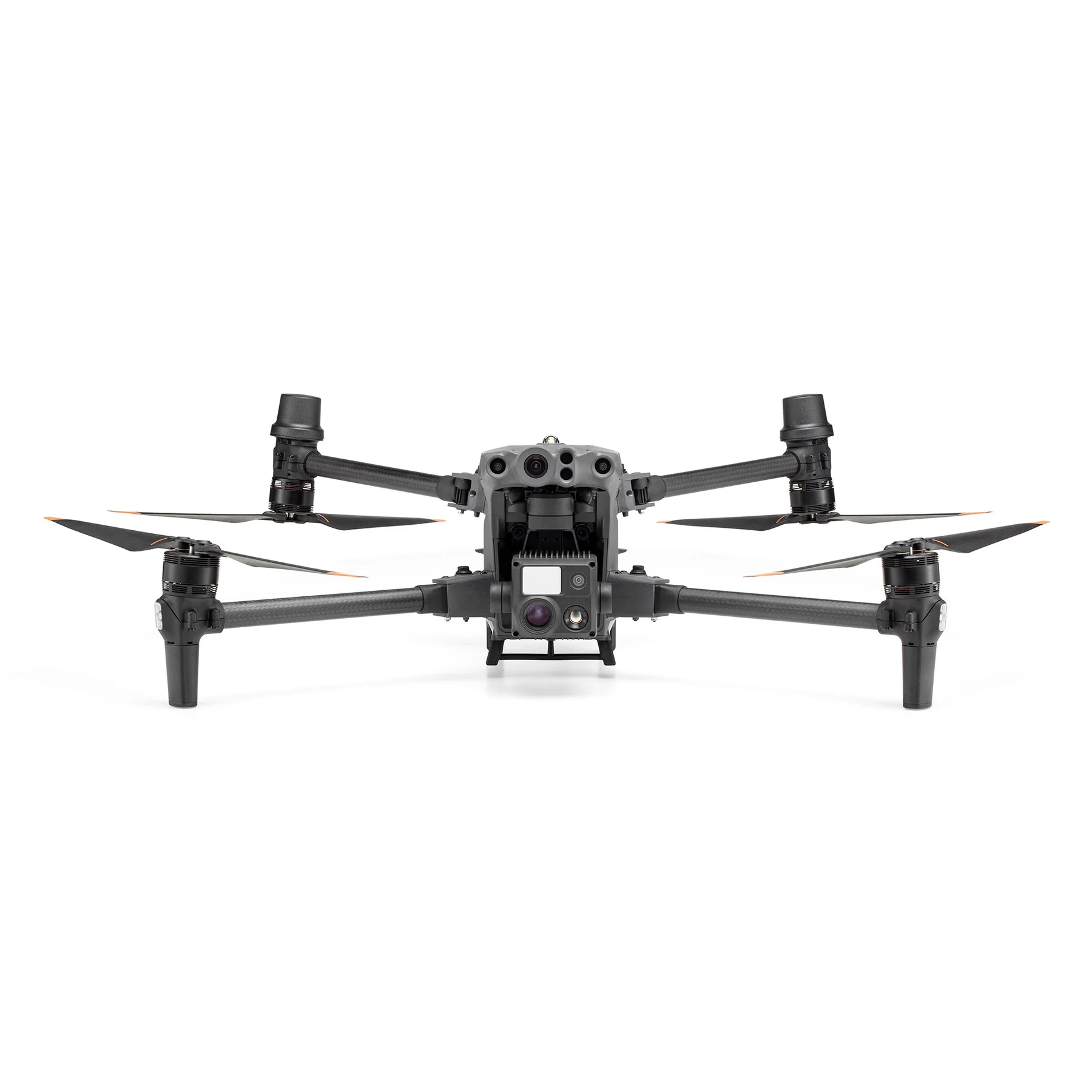
The payload flexibility of the Matrice means it can carry a 16x optical and 200x digital zoom camera alongside a high-res thermal camera and laser range finder. Pros will not find this lacking.
The best thermal drones
Why you can trust Digital Camera World
Best overall
Specifications
Reasons to buy
Reasons to avoid
✅ You want something you can deploy fast: Years of consumer-friendly design shows.
✅ You have a tight budget: As pro devices go, prices here are excellent value
❌ You want to change the SD card in the field: The port is fiddly while the battery is in
❌ You want the best standard video: The camera isn't as good as the one in the Mavic 3 Pro
The Mavic 3 Enterprise arrived nearly a year after the standard version, and brings all that I liked about that drone in a rugged hard carry-case. More significantly, it has a new beacon light (built-in), and mounts for accessories like RTK for mapping-level accuracy. (There is now a Mavic 4 out there too for video work, but the 3 is still sold in thermal configurations.)
For thermal photography, it has the same 640x512 resolution as its predecessor, but this is just one of three cameras; DJI manages to squeeze in a 56x hybrid zoom comprising of a half-inch main sensor (smaller than the 4/3rds one in the Mavic 3’s but still capable of 4K video). The thermal camera’s EFL is 40mm – 61˚ field of view, and the system can provide up to 28x zoom views with continuous side-by-side with the optical image to help operators direct responders.
While the optical cameras aren't as cinematic as those on the Mavic 3 or Mavic 4 Pro, you can push the ISO and at least see a lot if you don't mind the grain!
DJI also offers a suite of software for flight planning, mapping and thermal analysis; the Enterprise series is where DJI is prepared to offer SDKs, too. Creating thermal maps is a typical use case.
When I tested the drone, it had the speed and capability of the Mavic 3, and I was able to use it to re-create something between a search-and-rescue and a police hunt scenario. The ability to view optical and thermal side-by-side is helpful and should make training operatives easier, also helping keep budgets down!
See our full DJI Mavic 3T Enterprise review
Features | Excellent and customisable controller gives access to the drones power | ★★★★★ |
Design | DJI's consumer division makes their pro devices slick and easy to use too | ★★★★★ |
Performance | All the speed and power you'd expect, and easy to get up | ★★★★ |
Value | You get a lot of thermal flexibility for a relatively low price | ★★★★★ |
Best Pro
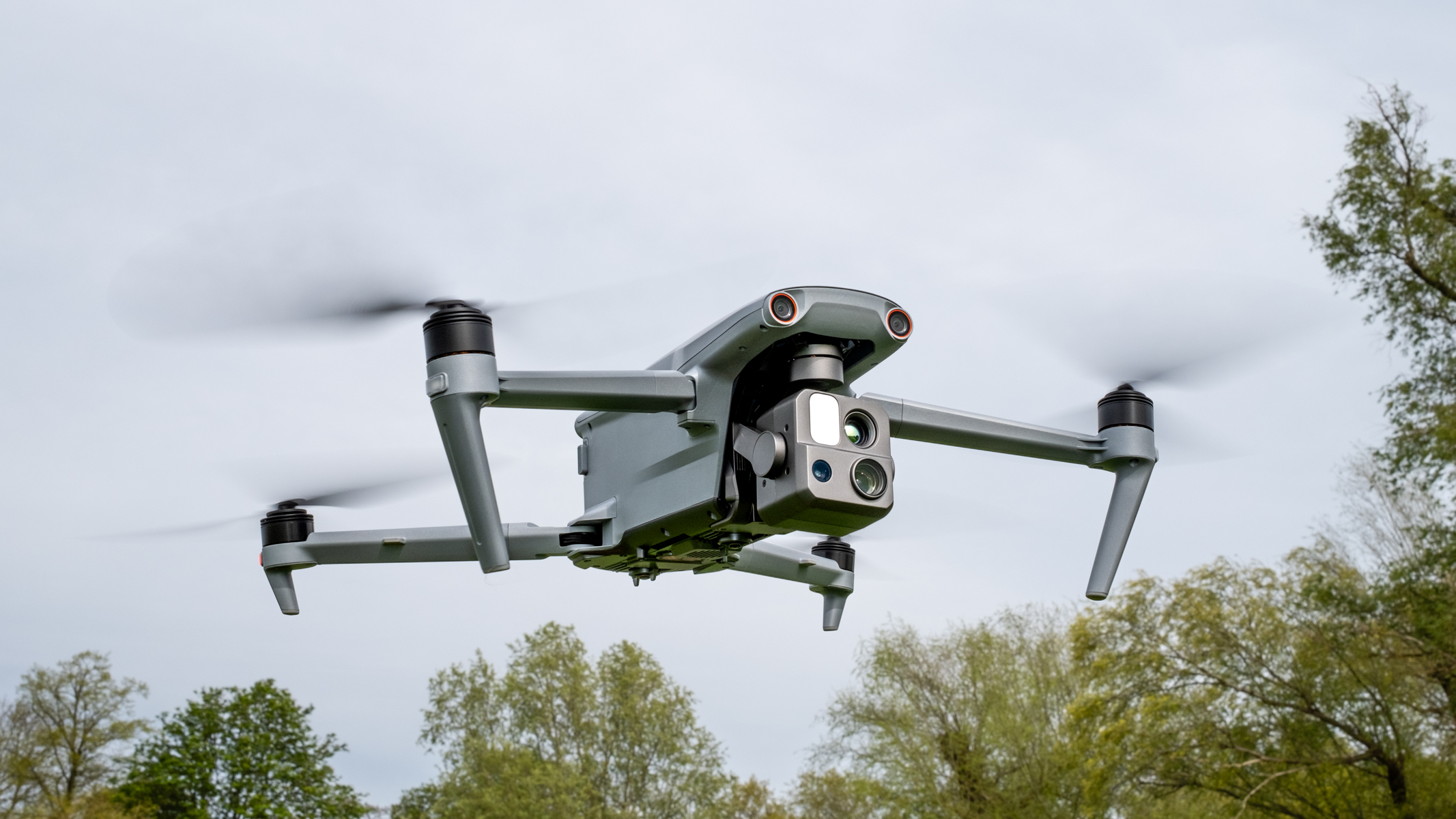
Specifications
Reasons to buy
Reasons to avoid
✅ You are worried about jamming: Anti-interference and anti-jam tech is featured
✅ You do 3D mapping: The 3D mapping mission system is easy-to-use
❌ You don't want to watch 30 minutes of video: There are a lot of features – you need to learn about them
❌ You are on a tight budget: It's not cheap, and the batteries are another $300/£309 a go!
Autel don't really play in the consumer space any more so, unlike a certain other brand, you can be reasonably sure that their airframes are designed with the commercial and law-enforcement uses in mind from the start. Of course that's not to say that's a brilliant thing, and it certainly doesn't mean the software will maintain competitive levels of ease of use, but for now the company has both consumer heritage and very serious ambition.
Like most enterprise devices, there is a big smart controller with a lot of options, and this one – while it's fairly easy to use after a primer, should still send you to Autel's video course to get started!
My colleague James Abbot did the actual test for the drone, and he certainly noticed that the controller weighed 1361g (48oz) which is pretty high – laptop territory – but you do get a very bright screen which is useful for something capable of mapping missions.
Again this isn't a drone where photography and cinematography are a huge priority, though the 50MP JPEGS are definitely to a high standard.
It's just speculation, of course, but this drone might well have been what encouraged DJI to reduce prices on the M30 series (and they cut the price of the M30 by about the price of a M3T!)
See our full Autel EVO Max 4T review
Features | After a little time to learn, there is a lot this drone unlocks | ★★★★★ |
Design | Slightly less elegant than some, the controller is very weighty | ★★★★ |
Performance | This is a responsive and powerful drone, with brilliant radio reception | ★★★★★ |
Value | If you don't mind the mapping subscription, the software is great | ★★★★ |
Best for zoom
3: DJI Matrice 30T
Specifications
Reasons to buy
Reasons to avoid
✅ Long tele: You get a long optical zoom.
✅ You need it rugged: This drone can fly -20 to 50˚C even in rain.
❌ You have to cope with American politics: DJI are the target of some US politicians making it hard for use for some government jobs.
The M30T is an incredibly powerful tool for all kinds of aerial work. The thermal camera is there, but for search and rescue or security monitoring the powerful zoom – backed up by AI subject tracking – means the M30T has some other tricks up its sleeve. There is also ‘super mode’ resolution for 1280x1024 thermal imaging and a laser range finder.
The drone also has a socket for third-party accessories which adds versatility – a speaker and spotlight is available – though the dual camera gimbal is fixed.
In search-and-rescue we’re sure the dual-controllers will be useful – the main fuselage has a 1080P forward-pointing camera for the pilot, while another user can direct the camera (within 180˚ pan and 165˚ tilt). All operators will also appreciate the 7-inch display and function buttons of the excellent RC Plus controller, as well as the quick-top-off mode on the charging station.
I've used the DJI RC Plus, the controller, which comes with a 7-inch widescreen yet manages not to feel too clumsy in hand, and has a lot of use programmable function buttons which are easy to reach (in the lower corners – good ergonomics).
Features | Dual batteries, optional searchlight and broadcast system – flexible for the compact form | ★★★★★ |
Design | Great ergonomics on the controller, plus optional auto landing and charging dock | ★★★★ |
Performance | Powerful – though the smaller design ditches landing feet | ★★★★ |
Value | Significant improvement in late 2023 with a price cut! | ★★★★★ |
Best for flexibility
4: DJI Matrice 350 RTK
Specifications
Reasons to buy
Reasons to avoid
✅ You want to choose your own camera: DJI have an extensive range, and the airframe gives you choice from thermal to cinematic.
✅ You want to land anywhere: Traditional landing legs protect the props and camera.
❌ You can't afford the thermal camera: It's a significant extra cost.
The DJI Matrice 350 RTK is a professional drone, with the flexibility (and deployment delays) that includes. The Drone accepts DJI’s detachable Zenmuse cameras which can – depending on your choice of lens – afford spectacular levels of optical zoom in the visual range.
The triple can make home for gimbals on top or below for cameras, LIDAR, spotlights and other accessories making for ultimate flexibility. Don’t forget to budget for every component you want – you’ll probably go for DJI’s H20T or the H20N for thermal, and the P1 gives amazing visuals. The H20N has starlight sensors for night vision, and 2x and 8x thermal cameras (both 640x512 resolution), plus a 1200, laser range finder.
Like the M30T and the Inspire 3, this machine has dual batteries – pro-grade redundancy isn’t cheap, but it does mean you can land and swap the batteries sequentially without powering down – hot swapping. Another pro feature is dual-control, which can be even better on this drone than the M30T as the camera can hang low and rotate further.
The drone also uses the same controller as the M30 (and indeed Inspire 3), which is itself IP54 rated so operation in bad weather is perfectly achievable. I found that DJI Pilot 2 is a very approachable interface, not a million miles from the consumer software, but not restrictive either.
Features | All the features you could want – but not usually without adding them on! | ★★★★ |
Design | A powerful airfram strong enough to take anywhere | ★★★★ |
Performance | Despite the flexibility, the app and controller are within human understanding! | ★★★★ |
Value | This is a high-budget means of operating, so very hard for us to define whether you need it. | ★★★ |
Best for agriculture
5: DJI Mavic 3 Multispectral
Specifications
Reasons to buy
Reasons to avoid
An update to DJI’s previous multispectral drone has been a long time coming; the model this replaces was built around the Phantom 4 rather than the folding Mavic series. Now, finally, a variant of the Mavic 3 has emerged, with the associated advantages of long battery life and folding arms. The gimbal-mounted camera block features a 4/3-inch 20-megapixel optical camera plus four 5-megapixel cameras. These capture images in specific wavelengths, not all visible to the human eye, which reveal crop conditions.
The higher resolution and better battery than its predecessor mean the drone can cover up to 2 square kilometers, or 495 acres, beating the P4 Multispectral by a factor of nearly 25 times. It also boasts centimetre-level positioning accuracy and the 15km radio range of O3, plus omnidirectional obstacle sensors.
The terrain-following ability means the drone can 3D map orchards and other vegetation on sloping hillsides, which is a big addition to the flexibility of the tech.
An interesting thing about this drone is the number of commercial packages I've seen it sold in. Some retailers actually offer bundles including not only essential software like Pix4Dfields software but a drone like the DJI Mini 4 just to use to train yourself on, and training.
Features | RTK capable drone making it centimeter accurate and 4x5MP multispectral cameras (as well as a 20MP main camera) | ★★★★ |
Design | Taking the folding design of the Mavic 3 makes this straightforward to deploy, but still powerful. | ★★★★ |
Performance | Multispectral Agriculture is more about the software, but the drone has good battery life which means it can do 200 hectares on a battery! | ★★★★ |
Value | Surprisingly accessible price for the tech. | ★★★★★ |
The P4 Multispectral is designed for agriculture, featuring a 6-camera gimbal which combines different kinds of thermal and visual camera data. DJI call the result NDVI (Normalized Difference Vegetation Index), a clear graphical display of the progress of crops. Here near infrared is especially helpful in identifying chlorophyll – more such light and the plants are healthier. This, in turn, can help a farmer efficiently prioritize their efforts to keep things healthy without over-using treatment. DJI offer a specific app, GS PRO, for iOS operation. It might be built on an older Phantom airframe, without the battery life or collision detection of newer designs, but it looks good and the camera offers unique data (made useful by a spectral sunlight sensor so they can be fairly compared).
FAQs
How do thermal drones work?
Thermal drones is shorthand for drones with thermal cameras. They typically allow a pilot to position a camera which translates temperature into a visual image. They often also have a traditional optical video camera pointing in the same direction. This is useful for identifying sources of heat – for example a lost person, or an overheating piece of equipment – e.g. electricity surveys.
What makes a good thermal camera?
Two factors are useful – one is the resolution. Around 640 x 480 is good for a thermal camera though. The other is the refresh rate; some thermal cameras have low refresh rates and as a result the video is quite jerky.
On a drone it is also useful to know how well the camera operates together with a visual camera – this might be a 'hybrid' mode.
Are there any significant regulations?
Some countries do have rules about thermal tech, especially shipping it – it's still considered military hardware by some trading rules which can be an issue.
On the subject of drone regulations, it’s also worth knowing that DJI aircraft also incorporate a ‘Flysafe’ database. These can restrict take-off and – even if you have aviation authority permission – you’ll also need to clear flight in these areas with DJI (via their app) which can take a few days.
Are there any significant bans – for example a DJI ban in the USA?
The USA is one government which is making it harder to buy the best drones, especially those from China, so I have compiled a best non-DJI drones guide. Keep track of the latest on the politics of any bans in the news section!
How we test thermal drones
Our drone expert has operated professionally and where possible flies the drones in real-world situations, simulating the kinds of missions they will be used on to review them. Where we're not able to pilot the craft outdoors, we share knowledge with trusted operators as well as checking the wider community's insights. All our drone reviews and guides are overseen by on-team Managing Editor Adam Juniper who is one of the UK's leading experts on drones, a professionally-qualified commercial drone pilot, and who has written several books on flying drones, including The Drone Pilot's Handbook.
Read more
• Best thermal imaging cameras
• Best thermal imaging binoculars
• Best night vision goggles
• Best indoor drones
The best camera deals, reviews, product advice, and unmissable photography news, direct to your inbox!

With over 20 years of expertise as a tech journalist, Adam brings a wealth of knowledge across a vast number of product categories, including timelapse cameras, home security cameras, NVR cameras, photography books, webcams, 3D printers and 3D scanners, borescopes, radar detectors… and, above all, drones.
Adam is our resident expert on all aspects of camera drones and drone photography, from buying guides on the best choices for aerial photographers of all ability levels to the latest rules and regulations on piloting drones.
He is the author of a number of books including The Complete Guide to Drones, The Smart Smart Home Handbook, 101 Tips for DSLR Video and The Drone Pilot's Handbook.

